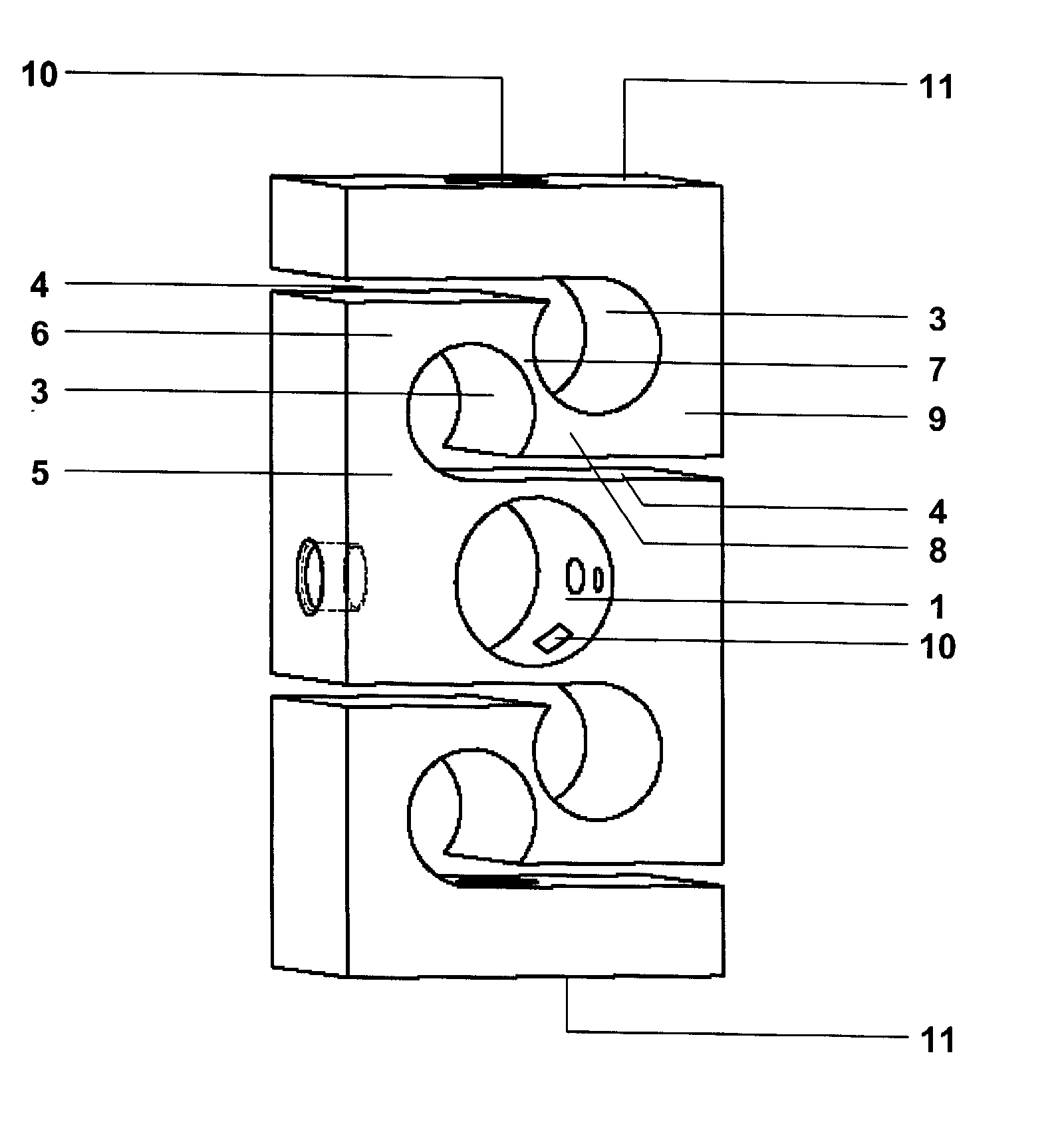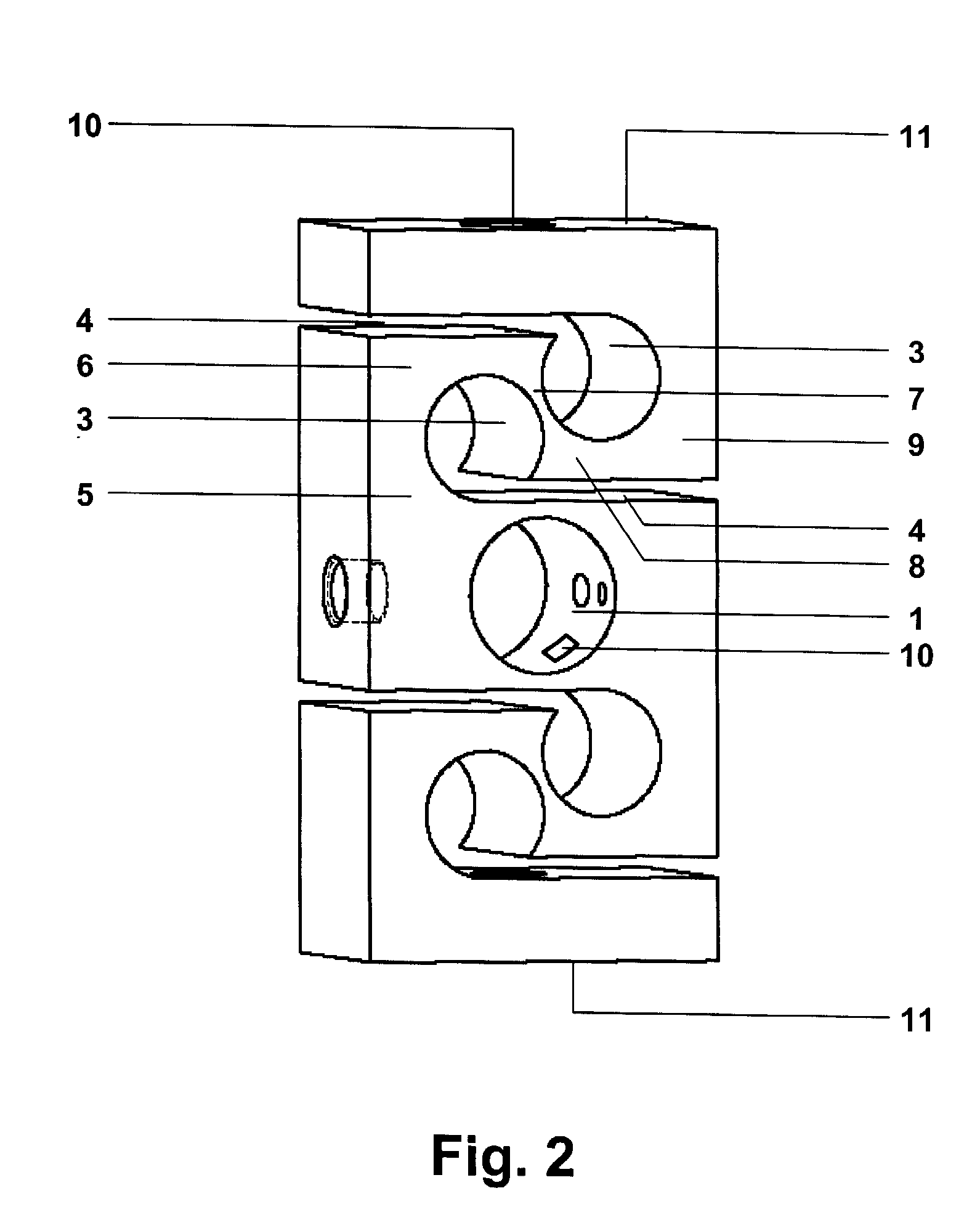Load Cell Insensitive to Angular Misalignments and Shock Loads
- Summary
- Abstract
- Description
- Claims
- Application Information
AI Technical Summary
Benefits of technology
Problems solved by technology
Method used
Image
Examples
Embodiment Construction
[0021] The following description is demonstrative in nature and is not intended to limit the scope of the invention or its application of uses.
[0022] There are a number of significant design features and improvements incorporated within the invention. The current invention is a new load cell design incorporates an integral spring into the body of the load cell. Compared to a standard S-cell, this spring does not reduce the load carrying capacity of the cell. The spring increases the deflection of the cell, yielding less sensitivity to angular misalignments, shock loads and overload stop setting errors.
[0023] Referring initially to FIG. 1, there is shown an elevational side view of a prior art S-cell type load cell. The load is measured in the shear-measurement section 1. The arms 2 fold back over the shear measurement section such that the load F applied at the top is co-linear with the load F applied at the bottom arm. One hole 3 is drilled on each end of the cell at the end of t...
PUM
 Login to View More
Login to View More Abstract
Description
Claims
Application Information
 Login to View More
Login to View More - R&D
- Intellectual Property
- Life Sciences
- Materials
- Tech Scout
- Unparalleled Data Quality
- Higher Quality Content
- 60% Fewer Hallucinations
Browse by: Latest US Patents, China's latest patents, Technical Efficacy Thesaurus, Application Domain, Technology Topic, Popular Technical Reports.
© 2025 PatSnap. All rights reserved.Legal|Privacy policy|Modern Slavery Act Transparency Statement|Sitemap|About US| Contact US: help@patsnap.com



